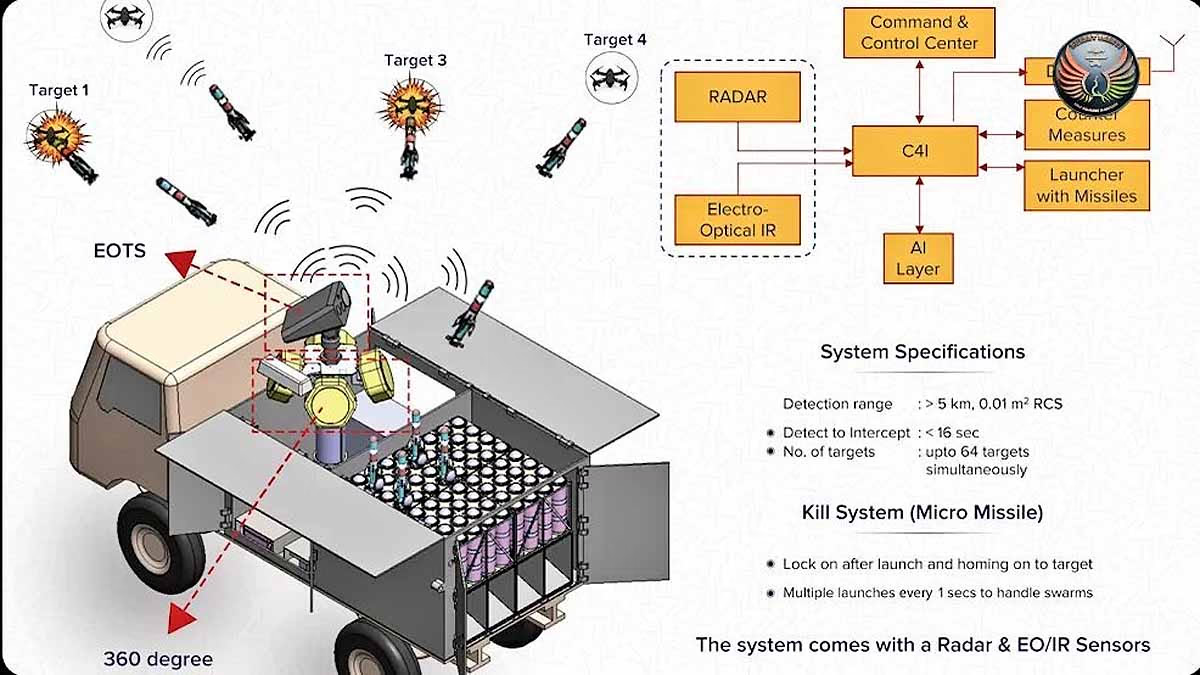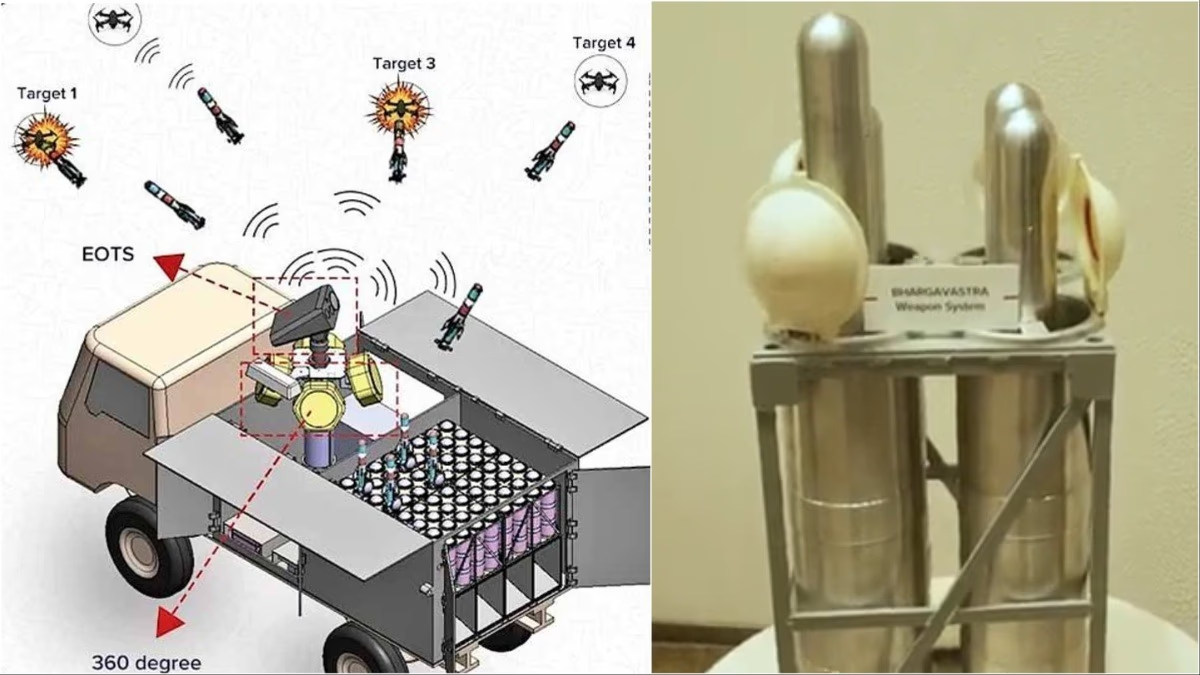India has bolstered its defense capabilities with a successful test of its indigenous 'Bhargavastra' anti-drone system. Designed and developed by Solar Defense and Aerospace Limited, this cost-effective system represents a revolutionary step in combating the growing threat of drone swarms.
On May 13, 2025, at the Gopalpur Seaward Firing Range in Odisha, the system's micro rockets underwent rigorous testing, achieving all set targets. This accomplishment marks another triumph for India's self-reliant defense policy and the 'Make in India' mission.
Details of the Trial
Three tests of 'Bhargavastra' were conducted in the presence of senior Army Air Defense (AAD) officials at Gopalpur.
First two trials:
Each test fired a single rocket.
Third trial:
Two rockets were fired in salvo mode with a two-second interval.
All four rockets performed as expected, achieving all launch parameters. These trials demonstrate the system's reliability and effectiveness against drone attacks.
Features of 'Bhargavastra'
'Bhargavastra' is a multi-layered anti-drone system capable of detecting and neutralizing small, fast-approaching drones. Its key features include...

Source: aajtak
Advanced Detection and Attack
The system can detect small drones at a range of 6 to 10 km, incorporating radar, electro-optical/infrared (EO/IR) sensors, and RF receivers. It can destroy drones within 2.5 km with a 20-meter lethal radius.
Unguided Micro Rockets:
Serve as the first layer to destroy drone swarms.
Guided Micro Missiles:
Provide precise attacks as the second layer (already tested).
Soft-Kill Layer:
An optional feature for jamming and spoofing, disabling drones without destruction.
Modular Design
The system can be customized according to user requirements. By integrating sensors and shooters, a layered air defense cover is provided for long-range targets. It operates in diverse terrains, such as high altitudes (>5000 meters), meeting the unique needs of Indian Armed Forces.
Command-and-Control Center
Equipped with C4I (Command, Control, Communications, Computers, and Intelligence) technology, this system offers comprehensive situational awareness for assessing and combating single or swarm drones. EO/IR sensors ensure the accurate identification of low radar cross-section (LRCS) targets.
Network-Centric Warfare
'Bhargavastra' integrates seamlessly with existing network-centric warfare frameworks, creating a comprehensive defense shield for the Army, Navy, and Air Force.

Source: aajtak
Globally Unique System
Developers describe 'Bhargavastra' as a globally unique system. Although many advanced countries are working on micro-missile defenses, a multi-layered, cost-effective indigenous system capable of eliminating drone swarms has yet to be deployed globally.
Cost-Effective: 'Bhargavastra' provides high efficacy at a lower cost compared to conventional air defense systems.
Indigenous Design: Entirely designed and developed in India, it underscores the success of the 'Make in India' mission.
World's First: Capable of launching 64 guided micro-missiles simultaneously, it presents an unprecedented solution against drone swarms.
Significance of the Trial
The trials held on May 13, 2025, in Gopalpur, proved 'Bhargavastra's technical capabilities. These trials mark a crucial step for the Indian Army, now poised to counter the mounting threat of drone warfare.
Role of Army Air Defense: The presence of AAD officials highlights this system's military potential. The Indian Army plans to soon incorporate it into its air defense system.
Future Plans: SDAL plans further extensive testing this year to evaluate all aspects before integrating the system into the armed forces.




